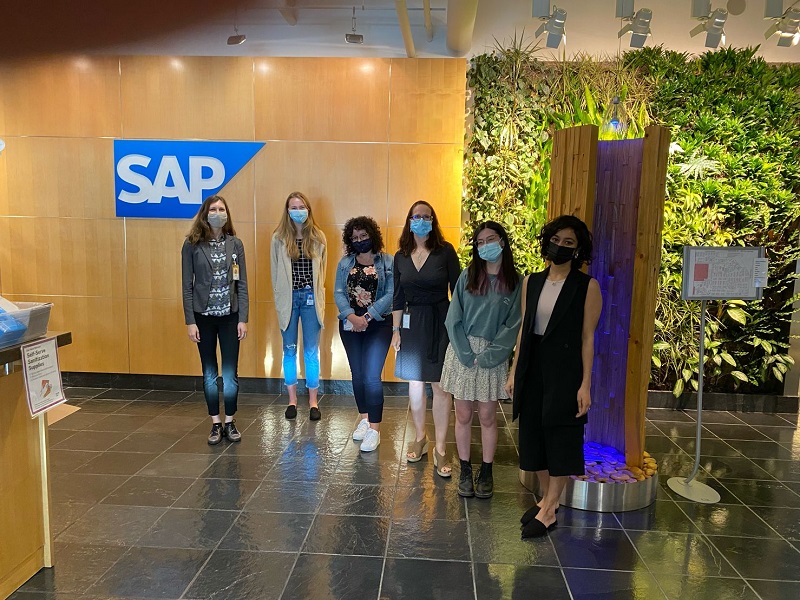

When SAP Canada’s offices fully reopen, it will adopt a flexible work model, as well as guidelines that aim to define what hybrid work means in the post-coronavirus pandemic workplace.
When the global pandemic was declared last March, SAP Canada temporarily shut down its six offices in Canada. Like most companies, the shift to 100 per cent remote working was a big transition at the time, says Cindy Fagen, SAP Labs’ managing director in Canada. She says while employees have remained engaged and productive at home, their relationship with the office has changed, so the company has had to carefully consider what flexible work will mean in the post-pandemic workplace.
Read: Employers must weigh several factors while planning for post-pandemic future: webinar
“We’ve really done the work behind the scenes getting ready, not just for safety protocols but things like benefits and making sure that all our leaders and employees have more clarity around what flex means for them once our offices are open again.”
SAP already had flexible working guidelines in place before the pandemic, with the company averaging a 70 per cent use of its offices between its locations in Vancouver, Calgary, Toronto, Waterloo, Ont., Ottawa and Montreal. But right now, says Fagen, there’s much more of an appetite to make remote working less of an exception and more of a norm. She says the organization’s “pledge for flex” is based on guidelines that pre-existed in Canada that will now provide leaders and their team members globally with a framework to jumpstart the conversation around what flexible working will look like post-pandemic.
The company is in the midst of the first of a two-phased approach to reopening its offices in Vancouver, which partially reopened July 5 with guidelines in place by SAP to ensure it’s bringing employees back safely. According to Fagen, the company has scaled back its 1,500-desk floor plan and is allowing employees to book one of only 150 available desks. So far, she says, there’s been a big uptake, with employees booking almost 100 per cent of the available seats in advance.
Read: Employers planning for post-pandemic future focusing on employee well-being, virtual health care
The second phase is a full countrywide reopening, depending on local or provincial guidelines. “The biggest piece right now for us is monitoring provincial guidelines, so in British Columbia . . . that will be after Labour Day,” she says. “We’re monitoring [the situation] very closely. Our intentions would be to reopen the office [fully] when it becomes safe to do so based on provincial guidelines and meeting SAP standards.”
The phased reopening between now and the end of the year is to provide employees with another option if they want it, notes Fagen. Through employee surveys, the company realized that, although employees can do solo work from home, some felt lonely and isolated — especially new hires, says Fagen. She points out employees want to come in for the Cs — coffee, creativity, collaboration and companionship. “The partial reopening — and eventual full reopening — is important because we can’t leave anyone behind. There are employees who want to work in office Monday to Friday.”
In Montreal, SAP had plans to co-locate two buildings into one this September, but since the public health crisis hit, it’s decided to merge the offices into two floors at a 60 per cent space reduction. “We’re going to create neighbourhoods, we’re going to have leaders [coordinate] with each other on when they’re [able] to go into the office [and] it’s going to be activity based.”
Read: Employee well-being critical to return to work after pandemic
To support employees during the shift to remote working, SAP extended its personal health-care spending account to allow employees to outfit their home offices. And in addition to its employee assistance program, SAP recently launched a company-wide, mental-health day off and extended its crisis leave so employees could take that time if they needed during the pandemic.
SAP wants to ensure it’s continuing to provide support to employees, no matter where they choose to work, says Fagen. To ensure both in-office and remote workers are included in wellness programs, such as yoga or meditation classes, leaders want to add audio and visual capabilities to the room so those who aren’t in the office can still experience the benefit virtually. And as the company moves forward with some of its signature offerings, such as its “Lunch on Us” program, where it provides a subsidy for lunch for all employees who opt in, Fagen says the company is looking at what those new iterations would be in a hybrid work model.
“We know today is going to change and we have to be able to empower our leaders to be in high-listening mode and work with us to be able to adjust to what’s needed.”
Read: SAP Canada increasing virtual wellness offerings amid pandemic
